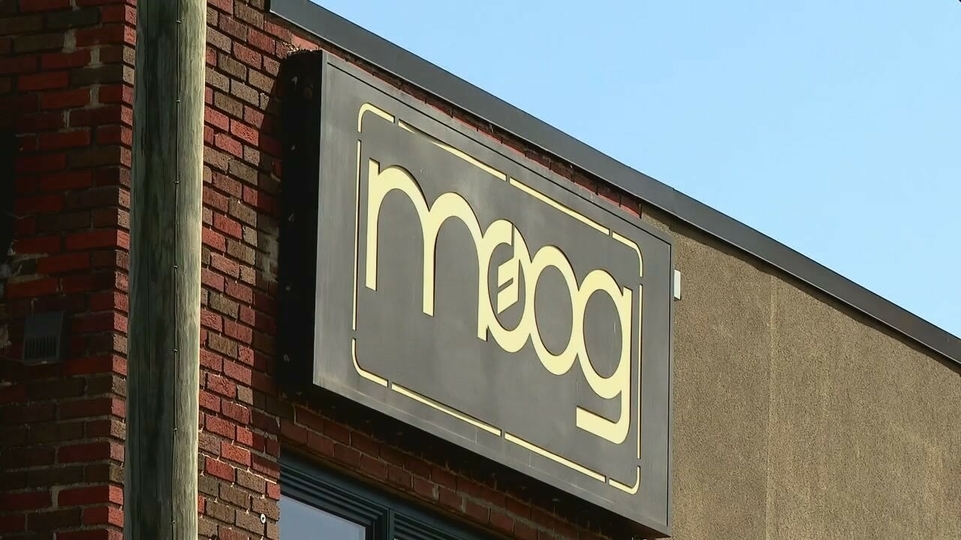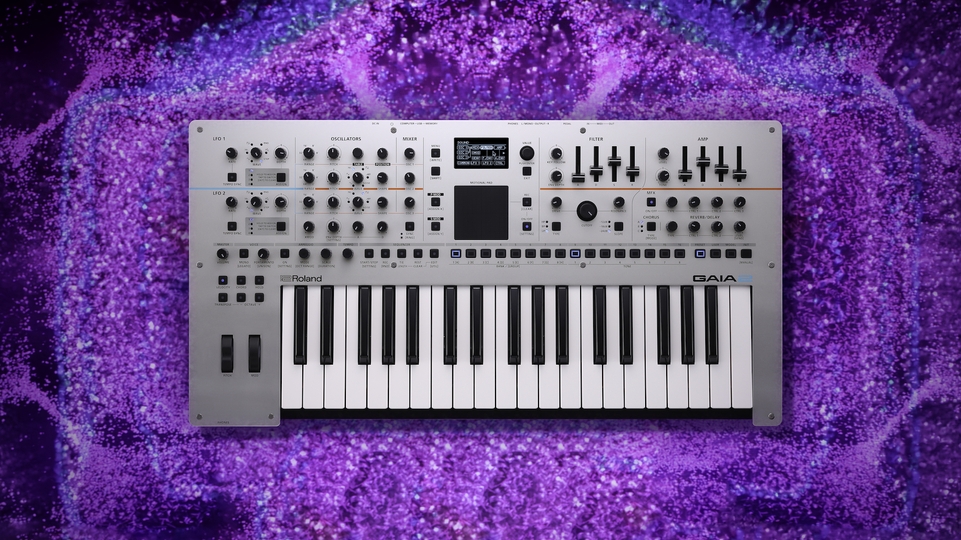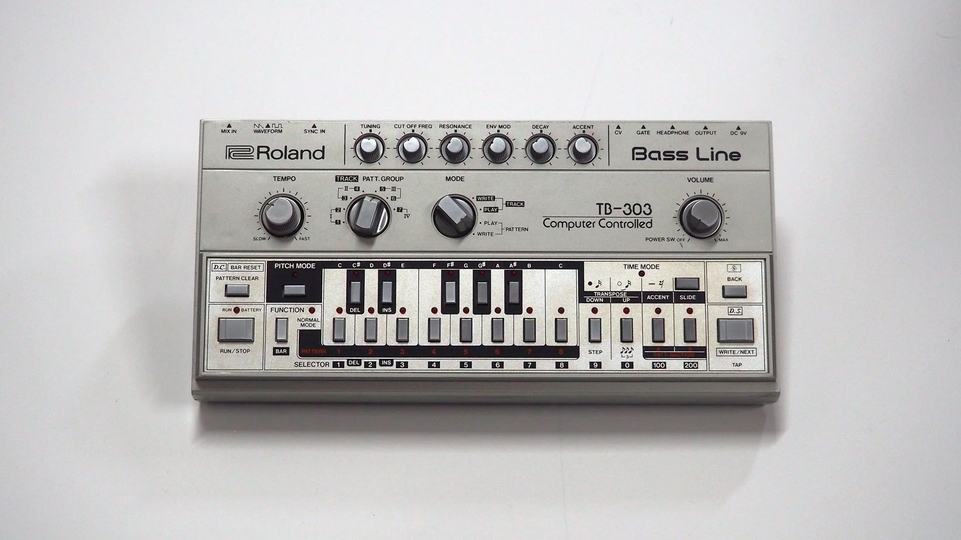
What are NFTs and why should electronic music care?
One of the Internet’s most talked-about acronyms — which stands for non-fungible token — is redefining digital ownership. But could NFTs really revolutionise the music industry, give the power back to artists, introduce new revenue streams, and ensure artists are automatically and accurately paid for their work? Or is it another ego-driven exercise for crypto investors, with a dramatic environmental impact? DJ Mag’s digital tech editor Declan McGlynn investigates
Most people’s first experience with NFTs most likely happened within the past few months. It was also, most likely, met with confusion. As GIFs of cats and animated twerking skeletons began to sell for six figures, questions began to be raised around the motives, validity, and purpose behind NFT auctions.
In March, US producer and DJ 3Lau sold his first collection of NFTs (33 in total) for $11.7m, Richie Hawtin celebrated 303 day with a series of auctions around original photos of his personal TB-303, Grimes sold her digital fantasy art for $6m, and Steve Aoki’s ‘Dream Catcher’ collection sold for $4.25m. Later that month, Aphex Twin sold a one-off AV clip with long-time collaborator Weirdcore for just over $128,000.
Given the staggering amounts of money involved, not to mention the initial confusions and misinformation around NFTs in general, opinion was quickly divided on whether NFTs were a legitimate beginning of a new digital ownership revolution, yet another playground for the rich, or a flash in the pan money grab from a flippant crypto market.
So what’s the truth? Let’s investigate.
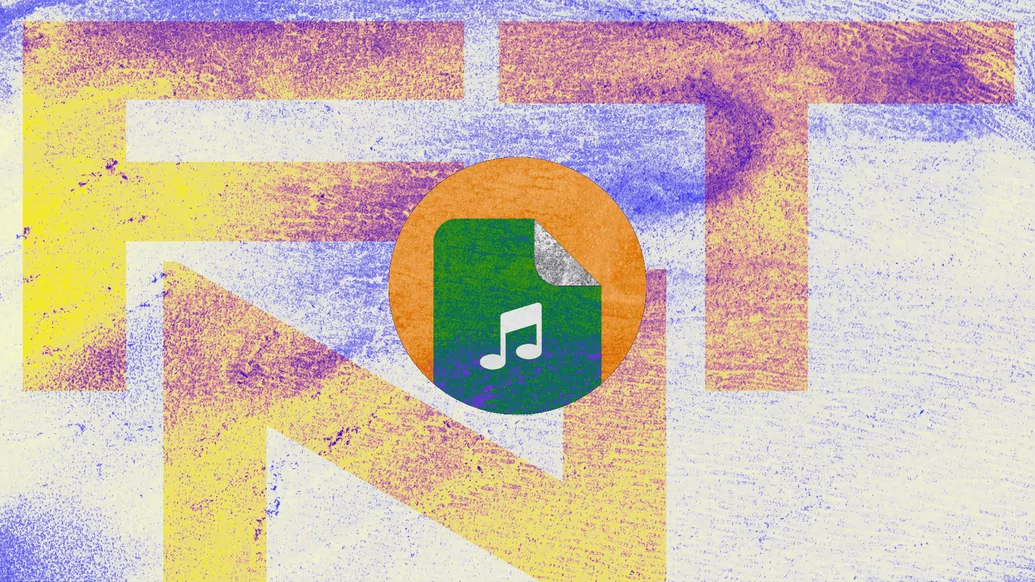

What are NFTs?
An NFT is a token, a filetype, that stores information about digital ownership and lives on the Ethereum blockchain — an online ledger that securely stores data. NFT stands for non-fungible token. A fungible item is something that can be exchanged like-for-like, because it’s worth the same thing, like how a one pound coin is worth the same as another one pound coin. Non-fungible relates to something unique, that can’t be traded as a like-for-like, like a one-off painting or a rare baseball card. But the name isn’t too important.
An NFT’s existence and any changes, such as sales or trades, are permanently recorded on the blockchain. Every ‘block’ is linked, which makes them ultra-secure: every change is cross-checked with other blocks to ensure consistency. It’s also decentralised, so there’s no one global server that holds all the information, which makes it harder to manipulate.
NFTs are the token that defines the ownership and metadata of a digital asset, not the asset itself. An artist could offer the exclusive rights to a file as part of the auction — such as Illmind’s NFT sample pack — but it’s not something that comes as standard with every NFT. In music’s case, be it a full-length track or a clip, there could be a URL linking to the MP3, WAV, etc. in question as part of the NFT sale. You are only buying the NFT itself, and while you might have access to the file, it doesn’t stop the artist from uploading it to the usual DSPs and services like Bandcamp, YouTube or Spotify, or pressing it to vinyl.
The next logical question is — why would you pay thousands of pounds for a file that everyone else has access to? And can’t every digital file be copied, shared, downloaded, and re-uploaded for free? This is probably the biggest mental leap required to understand and add any value to NFTs, and it comes back to the concept of digital scarcity.
“The neat thing about publishing media to the blockchain is that the blockchain can make that media scarce and valuable, the way media was scarce and valuable before the internet allowed everyone to pirate media,” says Trevor McFedries, a DJ and producer who previously worked with Ke$ha, Katy Perry, BANKS and Steve Aoki throughout the late 2000s and early 2010s. He also co-created the virtual influencer Lil Miquela, who has over 3m followers on Instagram and who sold her own collection of NFTs in November 2020 for $82,000, which at the time was the highest value sale on NFT auction site SuperRare. The money was donated to the charity Black Girls Code.
“The really, really neat thing is that the blockchain can make media scarce, but also universally accessible,” he continues. “Anyone can enjoy a piece of media, but someone can also OWN that media.” Until recently, it was near impossible to assign any value to a digital file. The contents of the file may have an emotional value to the listener, viewer or reader, but the file itself was worth nothing.
"NFTs are one of the first byproducts of Web 3.0 that have gone beyond the Discord chats and Reddit threads of those involved in tech"
When you upload an image to Instagram, for example, not only does Instagram technically own that image and the rights to do what they want with it, if Instagram goes down or is deleted forever, all your images are also gone. For producers and DJs, if SoundCloud or Mixcloud disappear tomorrow, your mixes and tracks go with them, along with your followers. Alternatively, if a new platform appears, you’ve got to start from scratch, re-uploading your tracks and photos — and you can’t take your followers with you; SoundCloud owns those too. While none of this benefits the user, it has huge benefits to the platforms that use your free content to train their AI, build data sets and track interactions between users to add value for their investors or IPOs. In fact, 43% of internet traffic is funnelled through just six companies.
Discussions around a ‘decentralised’ alternative — known as Web 3.0 — are nothing new, but the conversation has been fast-tracked by the explosion in popularity of NFT auctions. The theory is that every file is stored on a peer-to-peer network, kind of like a torrent, and the lack of centralised data and traffic means users aren’t tied to any one platform and can control their own digital footprint. This new utopia would also allow artists to control every aspect of their music, including setting customisable streaming rates per track, smart contracts that automatically split and pay global royalties in real-time and even assign a ‘secondary sale’ royalty rate for every future sale of an NFT to the original creator.
“[NFTs] can allow artists to capture value that has flown to platforms in the last 20 years,” says McFedries. “Music is the most valuable commodity on the internet and artists are starting to realise that, as NFTs bring that value back to them instead of Facebook, Spotify, etc.”
There’s no doubt that Web 2.0 has failed artists. A Musician’s Union poll in December 2020 revealed the “shockingly inadequate earnings the majority of music creators currently receive from streaming”. It showed that 82% of the artists surveyed earned less than £200, 50% said their income from recorded music had declined over the past 10 years, and 43% said that insufficient income from streaming caused them to get a job outside of music.
Data has also been obfuscated by Web 2.0. A report into music data by the UK government found that ‘‘the growth in new streaming services and platforms, each with their own methods of managing data, means that there is a potential for error and conflict and a growing threat to an artist’s ability to gain attribution and remuneration for their works”. Simply put, it’s getting harder to find out who’s owed what and by whom.
At the same time, vinyl sales increased by 40% in 2020 and Bandcamp Friday made millions for independent artists and labels. In a recent podcast for fabric, Bandcamp’s UK Label Rep Aly Gilani claimed that 40% of buyers actually pay more than the suggested price point when given the option to pay what they feel. These trends show that fans want to support their favourite artists beyond a streaming subscription. Where live shows and DJ sets may have filled that gap pre-2020, the lack of gig revenue this year has shone a blinding spotlight on the raw deal many artists face in the streaming economy.
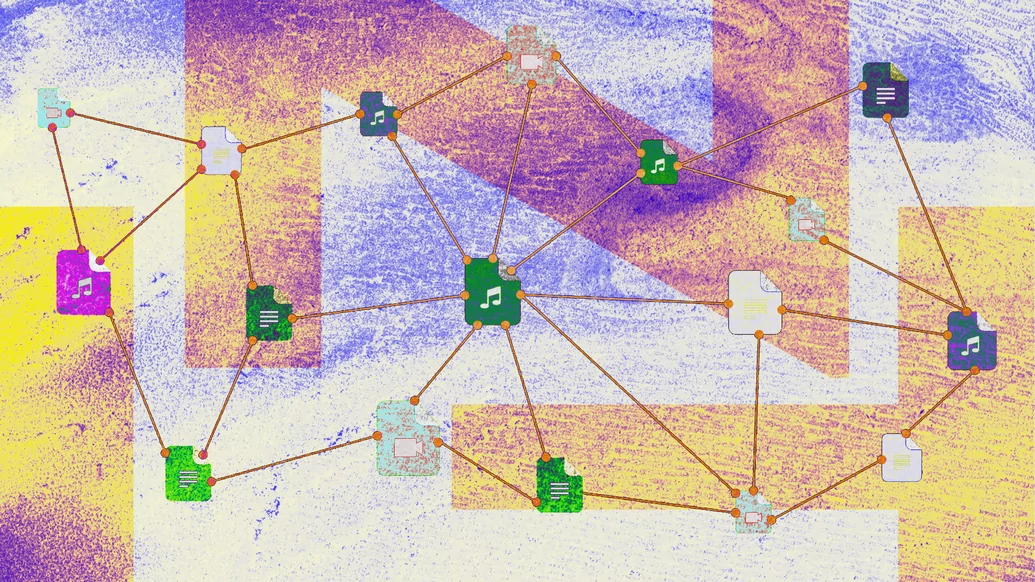

In theory, Web 3.0 is an exciting prospect that would likely appeal to the vast majority of independent artists reading this article. NFTs are one of the first byproducts of Web 3.0 that have gone beyond the Discord chats and Reddit threads of those involved in tech and hit the mainstream. They’ve quickly — perhaps prematurely — become a poster boy for Web 3.0’s potential, but with many other 3.0 concepts still in development or not ready for mass market, lots of questions are still left unanswered.
One common question is around sharing the wealth: Sure, Disclosure can create a track live on Twitch, mint it as an NFT and sell it for 40 grand, but how does that trickle down to the next generation of artists? Watching headline names rake in six figures for their auctions could be understandably triggering for an artist who’s spent the past 12 months unable to tour, struggling to make ends meet.
“The likelihood, if you don’t already have an audience, of seeing significant returns from posting a looping video to an auction site is quite low,” explains Mat Dryhurst, a musician, researcher, and lecturer at New York University's Clive Davis Institute of Recorded Music. He and his wife, artist Holly Herndon, host a podcast called Interdependence, self-described as ‘conversations with figures shaping 21st century culture’. Over the past year, it’s covered new clubbing economies with Richie Hawtin, Tom Gray’s #BrokenRecord campaign that brought Spotify to the UK Parliament and hosted visual artist David Rudnick, whose ‘Stem’ NFT sold for $20,000 in February. Their episode ‘NFTs for N00bs’ is also very much worth listening to.
“The way artists on the margins have always punched above their weight is by forming scenes,” Dryhurst continues, “and Web 3.0 tools are the most powerful tools I’ve seen in my lifetime to make that happen. Researching the space and having ideas for what is next is your best bet.”
“Innovate!” agrees McFedries. “Play with novel models and incentives for your work. There are ways to compete in the marketplace, but you can't do the same thing Drake will be doing and expect to stand out.”
Jacques Greene is a Canadian producer and DJ who recently created a six-second clip and accompanying visual as an NFT and sold it on popular marketplace Foundation for 13 Ethereum, approximately £16.7k at the time of writing. While Jacques’ profile isn’t small — he has a long-standing relationship with revered Scottish imprint LuckyMe and has toured extensively across the world over the last decade — he’s closer to what many would describe as an underground producer/DJ than the aforementioned A-list artists. Ironically, Greene’s innovation came in the form of traditional publishing.
“When we were considering putting something up, there was a series of questions — uploading a full song just as a song felt like we’re not thinking hard enough about the possibilities; just an artwork felt disingenuous because anything I had was either collaborative or fully commissioned from a digital artist. So my manager asked: ‘Why don’t we back it up with real-world implications?’”
“The likelihood, if you don’t already have an audience, of seeing significant returns from posting a looping video to an auction site is quite low"
A legal document was prepared to transfer the publishing of the full track to the auction’s winner, with Greene having approval on any licensing deals. “LuckyMe retains the master rights, I retain the artist performance rights and the highest bidder now owns the publishing rights. It’s up to that winner to register the information and then we’ll list them on the work. Written in the document, I retain approval — the new bidder can’t just go and say ‘Guess what? Your track is now in an ad for the US Army’ [laughs].”
Coincidentally, it was McFedries who won the auction. “I saw it as a piece of history,” he recalls, “an opportunity to provide more value than a traditional publisher. I want to take this song and try to create syncs and other value-add opportunities that might increase the value of the NFT long-term. Hopefully incentivising other artists to explore similar experiments.”
There are other examples of artists who’ve minted music-related NFTs at a more modest price point, including UK producer Mr. Mitch, whose first NFT has a reserve of $171. Brooklyn artist, producer, singer and prolific NFT creator Latashá sold a visualiser associated with a new track for $1,923, and has made roughly $7,000 in total from NFT sales so far. "This is allowing me to live well," she told Vice. "Being a woman-of-colour creative that didn't come up with a lot of money or privilege to create, this is allowing that space for me." Another example is French producer, Maelstrom, who included the stems to his track, as well as hardware presets for the Elektron Analog Four, as part of the NFT auction, which currently sits at 0.15 Ethereum, or £194.
Greene sees these more relatable auctions as a genuinely new revenue stream that isn’t exclusive to the top 1% of artists. “Maybe [it’s] interesting if your song gets uploaded to Spotify and Bandcamp and pressed to vinyl,” says Greene, “but there’s also a copy of it that exists on this website and someone who’s a superfan or a Patreon or what have you, could back it with $2,000. Maybe that’s another income you can use to offset any costs.”
Greene’s experiment paid off, but he’s not rushing to mint every new release as an NFT. “I think part of your brain is like ‘Wow, we had such a good result on the auction, we should go full crypto, and everything should be a token’, but frankly, the power this thing yields has made me take it very seriously.”


Environmental
The debate is raging over NFTs’, or more accurately, crypto and the blockchain’s environmental impact. The nuance and detail are hugely important and to discuss all aspects would be too dense for this feature, but suffice to say, the Ethereum blockchain uses an advanced series of cryptography in order to decide whether a transaction is valid. People known as ‘miners’ attempt to solve these puzzles with ultra-powerful and resource-heavy computers — a process known as Proof of Work — and those who do are rewarded with cryptocurrency. For those who fail, it’s all for nothing, with huge computing power wasted in the process.
There have been several solutions presented to deal with Ethereum’s environmental threat, including pivoting to a different type of verification called Proof of Stake, but it’s been “on the way” since 2018. NFT marketplace Zora paid for a 50-tonne carbon offset via a wind farm in Honduras and a project protecting the Amazon Rainforest to try to address some of the issues. In an attempt to reassure and dispel any myths, SuperRare posted a long explainer on Medium which includes the statement: ‘Minting and trading NFTs does not increase Ethereum’s carbon emissions’; others disagreed, claiming that by contributing to the NFT market hype, artists are increasing demand for ETH, which means more miners and in turn increases carbon emissions. SuperRare is also committing to carbon offsetting.
Given the newness of NFT auctions, little of the data has been peer-reviewed by outside experts, so as it stands, the issue remains unsolved, and controversial. Potential solutions are continuing to be developed. It’s worth adding too, that both streaming and vinyl manufacturing are subject to their own environmental criticisms.
New economic systems
So far, we’ve looked at the concept of an NFT auction, including high-profile case studies, and some more innovative examples from smaller artists. But to judge NFTs on the back of auctions alone is wildly underestimating their potential in solving real-world problems within the music industry and beyond. So how could an NFT actually affect any real change for DJs and producers?
“It’s first important to understand that an NFT is just a filetype, like an MP3 or an HTML element; it will be used in a million ways,” says Dryhurst. “It just so happens that many artists are first encountering this space with the news of million-dollar GIF auctions, and that can be very confusing. NFTs as a filetype will likely play a role in building new economic systems for groups of artists to experiment with different ways to fundraise and share things with people.”
One example is that of performance royalties. We’ve written extensively about the millions of pounds lost yearly in unclaimed and unassigned royalties. Many DJs don’t submit their setlists to Performance Rights Organisations (PROs) post-gig, either accurately or at all, and the money paid by clubs and festivals for licenses doesn’t go to the artists whose music was played at the event. It’s a global issue, with PROs from different countries operating with a different set of databases and priorities. If a DJ plays in four countries in one weekend, the challenges are immense to accurately track that data and pay the correct artists accordingly. In theory, an NFT could store information about producer credits, songwriters, mix engineers, anyone who has royalties on the record and what their percentage should be. Decentralisation means it wouldn’t be up to each country’s PRO to report the data, solving huge admin and database issues.
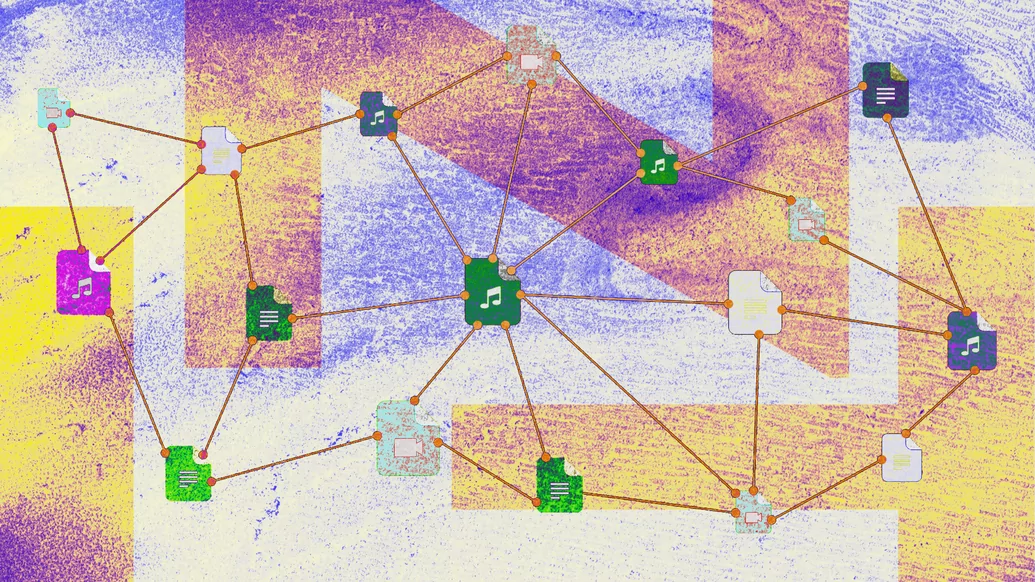

Best of all, once the data is reported either via Music Recognition Technology — a Shazam-style box installed in clubs — or via cloud DJ services like Beatport LINK, the payments could happen instantly and automatically, rather than waiting for your PRO’s quarterly payout. This is known as a Smart Contract — artist Imogen Heap wrote about their practical uses at length in 2018. It’s a good example of how NFTs and Web 3.0 in general could benefit the electronic music world. And, as DJing moves more and more into the cloud, it won’t be long before thousands of tracks played in thousands of bars and clubs can be instantly tracked, in real-time. Read our piece on DJing and the Data Wars for more on that topic.
Outside of DJing, startup Bluebox, owned by Ditto Music, aims to reclaim the “$2 billion in lost royalties each year” with a series of blockchain-based tools for creators. A recent auction by Chance the Rapper sold 75% of the royalties to an upcoming release — fans can bid on the copyright, and the winner will be able to collect digital royalties automatically via Bluebox. It’s another experimental move in a rapidly developing space.
Secondary market payments are also a big bonus for music producers. As former General Director of Boiler Room – now Head of Culture at Zora – Michail Stangl told Cadence: “One of the biggest issues that electronic music lovers have is an LP goes out of sale and goes straight to Discogs for ten-times the price. I saw the experiment to tokenise physical goods as a way that the artists could own the secondary market.” Using NFTs, artists could continue to make 10% (or any percentage they dictate) of every sale of their work, indefinitely.
It’s easy to look at both Web 3.0, blockchain and NFT solutions and wonder how this new tech can translate to platforms already recognised by music fans who are less interested in the tech itself and just want easy, fair access to music they love. How can we get from theoretical ownership concepts to mass adoption among global music listeners? Especially as the platforms that currently facilitate the vast majority of music listening are the ones set to lose out? Will they let that happen?
Spotify has already begun its blockchain journey, with the acquisition of Mediachain Labs in 2017, a startup that “was working to leverage blockchain technology in order to help solve problems with attribution”.
In March, Twitter co-founder Jack Dorsey’s Square Inc payment company acquired streaming service TIDAL. A series of tweets followed, championing TIDAL’s original vision of being “artist-owned and led” and that they’ll continue to focus on “more powerful tools for artists, inclusive of new ways of getting paid.” Square handed financial control back to individuals and with Dorsey already a crypto convert and a man who sold his first tweet as an NFT for $2.9m, could he take Square’s concepts and apply them to TIDAL, giving artists a storefront for merch, NFTs, smart contracts, tickets, music and more? Time will tell.
Blockchain-based streaming services do already exist and one of the most promising is Audius, whose advisors include artists Deadmau5, Rezz and RAC, CEO of Beatport Robb McDaniels, co-founder of Twitch Justin Kan, and Avicii’s former manager Ash Pournouri. Due to its decentralised nature, the theory is it’ll eventually become self-sufficient with full artist control, setting their own price points for everything from individual tracks to one-on-one IRL experiences. According to Audius CEO Roneil Rumburg, over 100,000 artists have uploaded their tracks and over four million people use it to listen to music every month.
Other independent streaming and music solutions exist too, including Berlin’s Resonate, free streaming and blockchain-based platform MusicCoin, and newly created NFT-based music trading platform Catalog, who recently tweeted they’ve made $70,000 for artists in their first two weeks of operation, with an average sale price of $1,700.
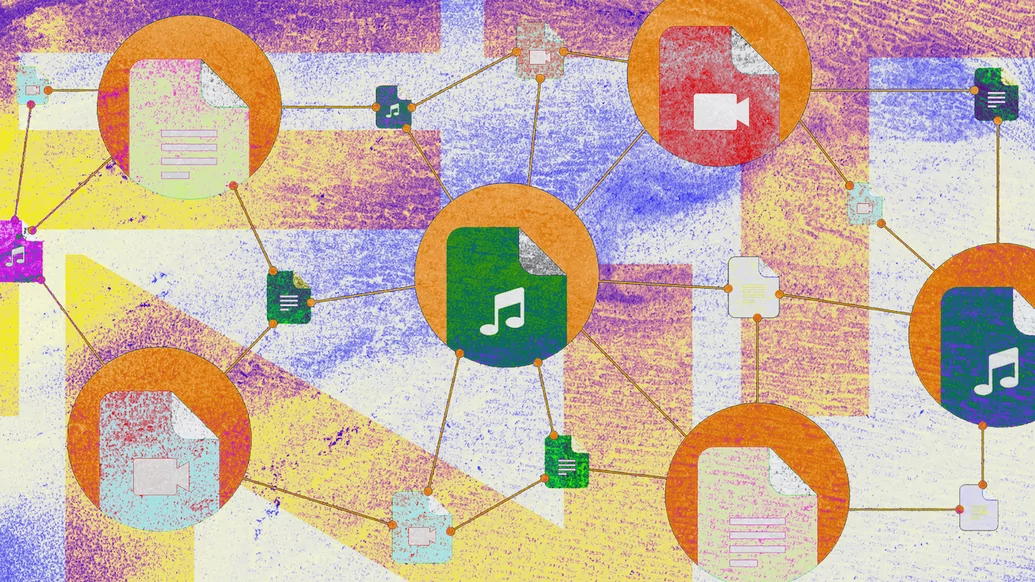

Whether Spotify, TIDAL and others’ adventures in blockchain end in fairer, more accurate payments for artists, or are just another way of positioning themselves at the top of the food chain for the next iteration of the internet remains to be seen.
At a time when many artists, producers and DJs have spent a year without income, obscene displays of wealth associated with some NFT art auctions have triggered justifiable concerns about what looks like another gold rush for crypto investors, framed as a ‘new horizon’ for all artists.
“Disinteresting art sells for astronomical amounts all the time. We just don’t see it,” says Dryhurst. “Web 3.0 didn’t invent vulgar displays of wealth, but it does perhaps give us some purchase on understanding the ways things work currently more transparently. I personally think that is quite a useful means to be able to build something better.”
If NFTs are a legitimate future for giving ownership back to artists, tracking and paying global royalties accurately, curating collectables for fans while still allowing music to be available to all, or selling one-off experiences on the blockchain and ending ticket touting overnight, there are still many steps to go.
One elephant in the room is that NFTs don’t actually have a legal backing. Yes, you can sell in a 10% royalty share meaning the original owner makes 10% of every further sale of that NFT, but it’s not valid in the ‘real world’. At least not yet. “If I were to sell an NFT on an auction site, I am making an agreement with the buyer that is only really ‘real’ within Web 3.0,” clarifies Dryhurst. “There are protections against abuse of that, a significant one being reputation risk. If an artist breaks those agreements, there is less likelihood others will want to enter agreements with them.
"But for the sake of argument, yes, the artist still retains the copyright of those works under ‘real world’ law, and could go and license or sell that artwork in the real world with no legal repercussions. I suspect not many will, but they could.”
Another is that, while the NFT itself lives on the indestructible blockchain, the file it links to is susceptible to any of the usual hosting issues, even when hosted on a secure peer-to-peer network. The team behind Check My NFT warned The Verge: “One hard drive crashing could lead to permanent loss of the assets.”
Existing agreements between artists and labels around legacy catalogues are also an issue — it may be the case that from March 2021, NFTs are part of a contract between a label and artist, but it’s unlikely they’ve been considered until now. That’s why the vast majority of music minted as an NFT is brand new. How acts could port over their existing, signed catalogues is still unclear.
However, being too critical of NFTs’ and the blockchain’s inability to solve these problems immediately, could miss their potential entirely. “We are seeing the new internet being built in real time, and at a dizzying pace,” says Dryhurst. “By 2023, I hope public perception of the field will have matured to the point where it becomes clear what we are dealing with here is a new internet. This intense focus on a particular usage of the NFT filetype will pass, but the underlying tech and concepts are here to stay.”
Artist David Rudnick agrees, tweeting: “I fully respect the view of those who want nothing to do [with] the space, but the idea of assets on the blockchain isn’t going away. There is a small window to try [to] establish some norms or values that might have real value moving forward. Doing nothing now lets the predators define it.”
If one positive can come out of the sometimes-absurd NFT auction gold rush and the resulting media frenzy, it’s that more people will become aware of blockchain and its potential for a genuine, artist-first, alternative digital existence.
